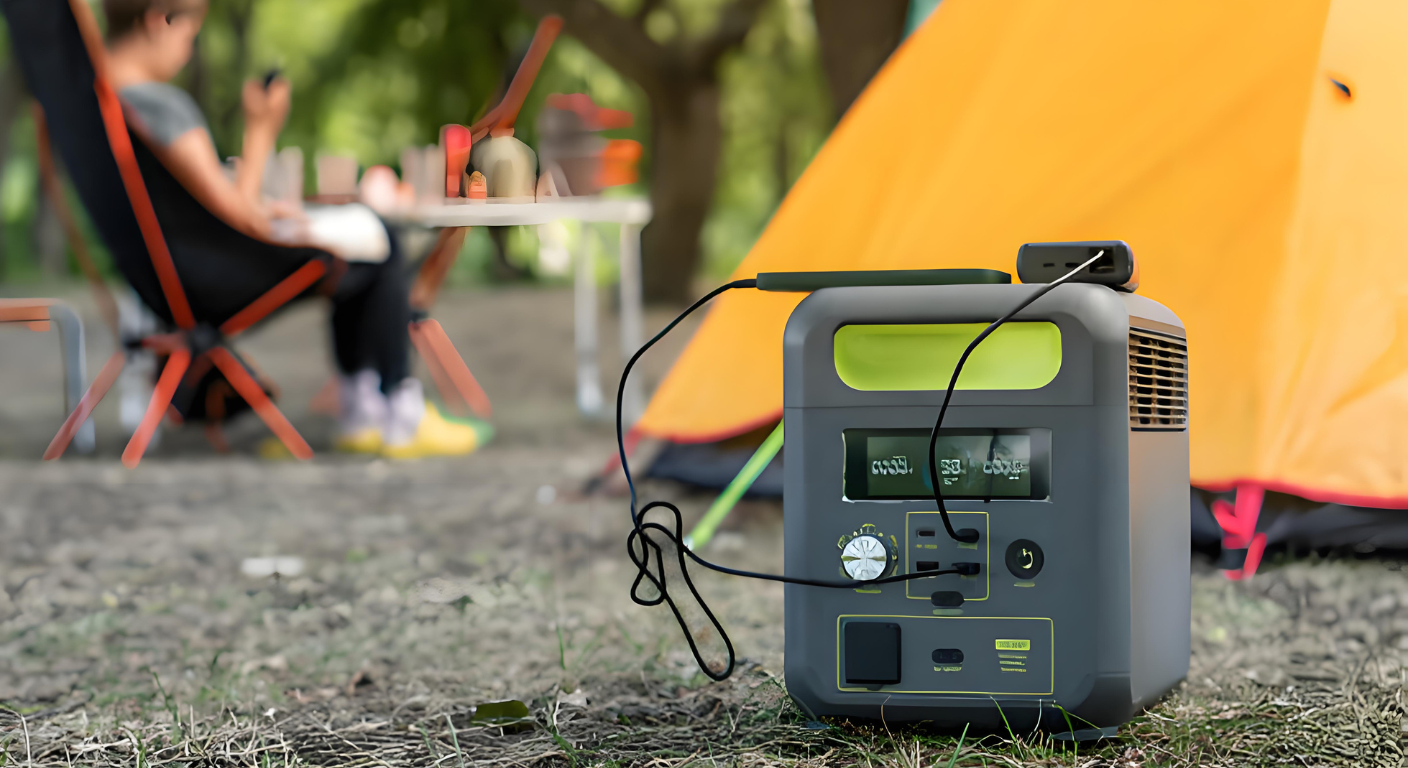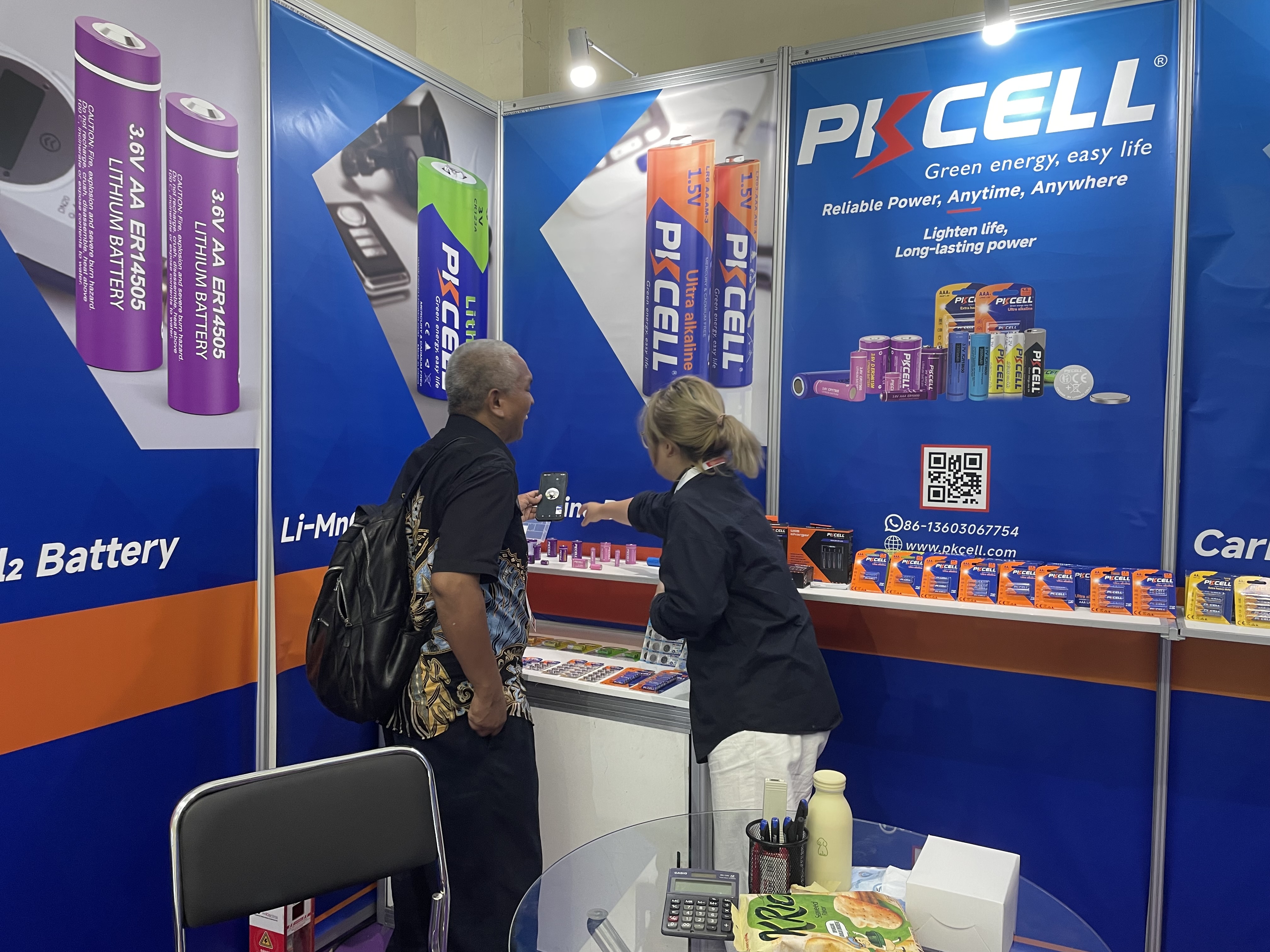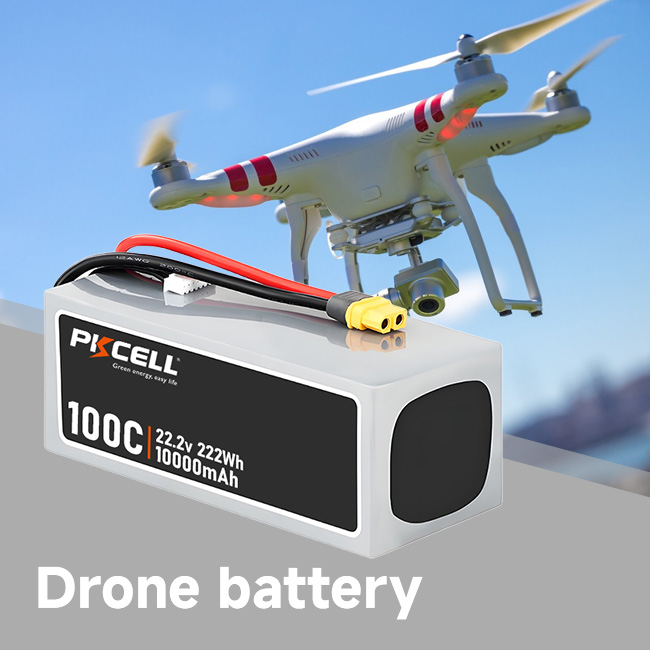
Introduction
Camping is a fun and relaxing way to enjoy nature, spend time with family and friends, and escape the busy city life. But in today’s world, most campers still rely on some modern gadgets—like phones, lights, speakers, and even fridges. That’s why a good camping battery bank or portable power station is so helpful. In this guide, we’ll explain everything you need to know about batteries for camping, how to choose them, and how to take care of them properly.
Understanding Camping Battery
Camping has become more popular than ever, thanks to people wanting to explore the outdoors and get closer to nature. But even when you’re out in the wild, having power is still important. Whether for safety, comfort, or fun, electricity helps make camping more enjoyable. You need it for lighting, charging phones, running small fans, or even powering cooking gear. That’s where a camping battery comes in.
A battery for camping is a portable power source that stores energy. It gives electricity when you can’t get it from normal sources. Choosing the correct portable battery for camping is very important. A good battery will keep you powered up longer, work better in outdoor conditions, and match your specific power needs without weighing you down. Choosing the right one will make your outdoor adventure more enjoyable, safe, and comfortable.
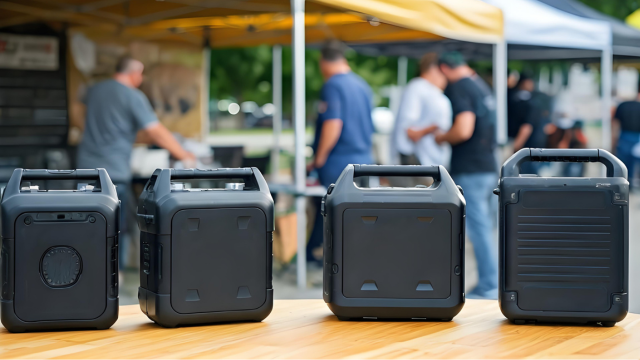
Common Types of Camping Battery Bank Explained
Camping batteries are super important because they let you enjoy modern comforts in nature. But not all batteries are the same. There are different types of camping power station and camping battery pack. Each one has its own features, strengths, and limits. Let’s explore the common types campers use today and what makes each different.
Lead-Acid Batteries (AGM & Gel)
Lead-acid batteries are the oldest and cheapest option. AGM and Gel types are sealed, making them safer and easier to transport. They are heavy, slow-charging, and don’t last as long as newer batteries. But they are cheaper and widely available. Best for budget campers or short trips.
Lithium-Ion Batteries
Lithium-ion batteries are now the best choice for portable power. Their lightweight and small design, long life, and high energy storage make them great for today’s campers. They can hold much more power in a smaller and lighter size than lead-acid batteries. This means you can run more devices for longer. Plus, they charge quickly so you can get your power back quickly. Although lithium-ion batteries cost more at first, they last a long time. With good care, they can last several years. This makes them a good investment for frequent campers or longer trips.
Nickel-Cadmium Batteries (NiCd)
These are strong and can handle rough weather. They don’t break easily. However, they are heavier and less efficient than lithium batteries. They also have a “memory effect,” which can lower their capacity over time. They are best for harsh outdoor settings.
Solar Panels with Built-In Battery Packs
Solar panels with built-in battery packs offer a sustainable and convenient way to stay powered up. They let you charge during the day using sunlight and store energy for night use. They are great for light power needs in sunny areas and eco-friendly campers. But they are slow charging and depend on sunlight.
How to Choose the Best Battery Bank for Camping?
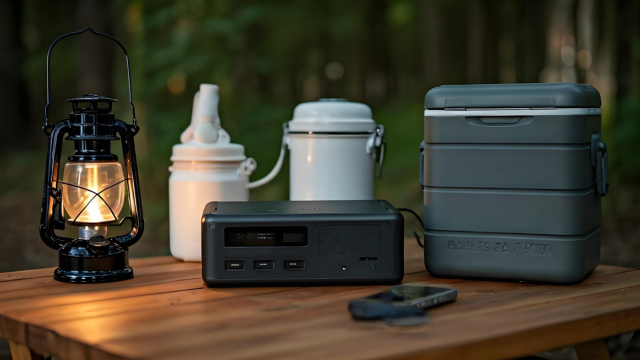
Compatibility with Your Camping Devices
Make sure your camping power bank works with your gadgets. If it doesn’t match your speaker, light, or cooler, it won’t help you at all. Start by listing the devices you want to use, like lights, phones, mini-fridges, or CPAP machines. Next, follow these key things to find a camping portable power bank that matches your equipment requirements:
- Voltage: Must match the device input (commonly 5V, 12V, or 24V)
- Capacity (mAh or Ah): Find out how much power your devices use and estimate how much energy you will need each day. The larger the capacity, the longer the battery life. But it is also usually more expensive and heavier.
- Weight & Size: When backpacking, choose a lightweight battery bank for camping. When RVing, choose a heavier battery pack for camping with a larger capacity.
- Battery Chemistry: Lithium-ion batteries are better suited for most campers
- Output Ports: USB, AC, DC depending on your gear
- Recharge Methods: Wall plug, solar panel, car charger, etc.
Other Personal Factors to Consider
Technical details are vital when picking the right power pack for camping, but personal choices also matter. Every camper is different. Think about your own needs when choosing a camping electric battery:
- User Needs & Preferences: Consider how you plan to use your portable power bank for camping. Suppose you travel frequently or camp in remote areas. In that case, you may need a high-powered unit that lasts longer and handles rough conditions. For short, local trips or light use, a smaller portable power for camping might work just fine.
- Runtime & Lifespan: Ensure it can power your devices, like lights or a fan, for a whole night (typically 8–10 hours). Look for camping batteries that offer long-lasting performance so you don’t have to replace them too soon.
- Charging Time & Method: If you are often on the go, a camping battery with quick charging can be very helpful. Also, determine whether the camping power bank supports alternative charging options, such as solar panels or a car charger, to give you more flexibility during your trips.
- Portability: Whether you enjoy simple backpacking or RV trips with comforts can affect what you need for weight and portability.
- Additional Features: Certain camping battery pack has extra features that can add convenience. USB ports for charging smaller devices, built-in LED lights, or even inverters to power larger appliances can make your experience more enjoyable.
- Budget & Cost: Going for a cheaper camping battery bank might seem tempting, but those options often have a shorter lifespan and lower performance. Investing in a higher-quality battery might cost more upfront but can prove more cost-effective over time.
- Quality & Brand Reputation: Always consider batteries from manufacturers known for their safety and high standards. A reputable brand usually means you can count on better performance, excellent customer service, and reliable products.
Safety Measures for Handling Camping Battery Pack
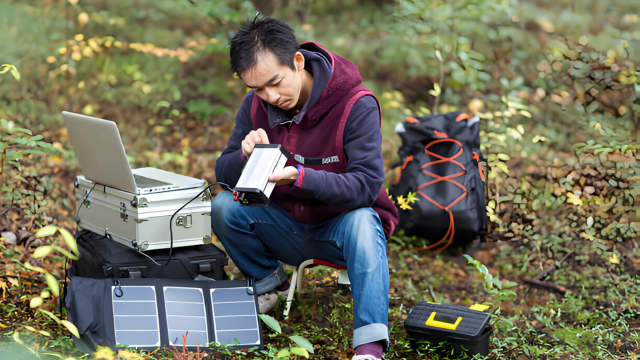
Keeping your camping power bank safe is just as important as choosing the right one. Improper use may damage the equipment, creating the risk of injury or fire. Proper use and storage help your battery last longer, stay safe, and perform better during your outdoor trips. To make sure your camping battery bank stays safe and works well, follow some basic steps.
Storage and Disposal
You should store batteries in a cool and dry place. Keep them away from direct sunlight and heat. Don’t store it in areas that get too hot or too cold—like inside a hot car or freezing tent. Extreme temperatures can make batteries lose charge faster and shorten their life. Make sure nothing metal, like coins or tools, touches the battery ends. This can cause sparks or even a fire. Always keep the battery out of reach of kids and pets. When the battery gets old and no longer works well, take it to a local battery recycling center. Never throw it in the trash or burn it.
Proper Charging Practices
Use the charger that comes with your battery pack for camping, or make sure it’s designed for that specific battery type. A wrong charger might damage it or cause it to overheat. Unplug the portable power supply for camping once it’s fully charged. Please don’t leave it charging for too long. If your battery or devices feel warm after use, let them cool down before plugging them in again. Try not to let the battery go completely empty. Charge your battery when it remains about 20-30%. Even if you don’t use it often, give it a full charge once a month. If storing it for a while, keep it charged to around 50%. Always charge in a space with good airflow, and never use or charge a swollen or damaged battery.
How to Maintain and Extend Camping Power Bank Life?
Follow the care tips from the battery maker. Avoid using it in very hot or cold weather, as this can shorten battery life. If you have more than one battery, use them in rotation. This keeps them all in better condition. Try to avoid fully draining your battery every time—it’s better to recharge before it’s empty. Slow charging can also help make the battery last longer. Wipe the battery ends with a clean, dry cloth every now and then to remove dust and dirt. This helps stop corrosion. Keep it at 50–70% charged when storing and place it in a case or padded bag to protect it. Avoid dropping or hitting it, and check regularly for any cracks or leaks.
Common Portable Power Station Issues and Solutions
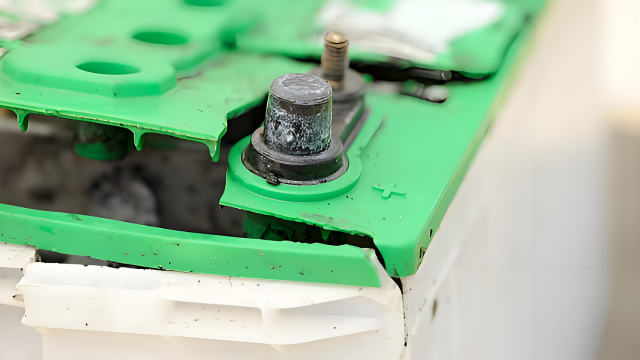
Just like other gear, camping battery pack can sometimes run into problems. Knowing what to look for and how to fix it can save your trip. Here are a few typical issues and how to handle them:
- Camping gear won’t turn on: Ensure the camping battery is charged and correctly connected to your camping gear. If it still doesn’t work, try using another battery to test the setup.
- Battery loses power quickly: Your battery could be old or damaged. Try cleaning the battery terminals and using a different charger. If it continues, it may need to be replaced.
- Battery won’t charge: Check that the wall outlet, charger, and cable are all working. Look at the battery contacts to make sure they’re clean. If the battery feels hot, wait for it to cool down before charging it again.
- Getting too hot during use or charging: If the battery overheats, stop using it. Let it cool completely and keep it in a place with good airflow. If this happens often, it’s safer to get a new one.
- Swelling or leaking: This is a significant safety concern. Stop using the portable power station right away. Follow proper recycling steps.
- Battery level shows wrong numbers: Do a full charge and discharge to reset the display. If it keeps showing errors, it may be a sign that the battery is failing.
- Rusty or dirty terminals: Gently wipe with a dry cloth. If the terminals have heavy rust or damage, replace the battery to avoid poor performance or safety risks.
Where to Buy High-quality Battery Pack for Camping?
When it’s time to get a new portable power station camping, buying from a trusted source is crucial. This helps you avoid poor-quality or unsafe products. At PKCELL, we create strong, custom-built batteries that work great for outdoor use. Here’s why many campers choose PKCELL camping battery pack:
- Fair Prices and Friendly Help: Our batteries for camping are affordable and built to last. Our team is happy to assist if you have questions or need help picking the right one.
- Custom Fit for Your Camping Gear: We build camping battery bank that match the power, voltage, and size your camping devices need. You can even get a fully custom battery bank for camping made just for your setup.
- Stable, Long-Lasting Power: Every PKCELL camping battery is made with quality parts and tested for safety. They deliver consistent power, so your gear stays on all night without issues.
- Built-in Protection Features: Safety comes first. Each battery has systems to stop overcharging, short circuits, and deep discharge. That means your devices and battery stay safe for longer.
- OEM/ODM Support for Custom Orders: Need a special solution for your outdoor business or large project? We also offer custom design and branding for bulk or unique power needs.
🛒 Looking for a powerful and reliable battery for camping? PKCELL can build the perfect solution for your outdoor needs. Contact us today to learn more—we’re happy to help!

Conclusion
Camping is one of the best ways to relax, explore, and connect with nature. But even in the wild, we still rely on electricity. A good camping battery or camping power station helps power your essentials—lights, phones, fans, and more—so you can camp smarter and stay safe. You can enjoy your trip without worry by understanding the types of battery bank for camping, how to choose one, how to care for it, and where to buy the best fit. So, before your next outdoor adventure, don’t forget your most important gear: a powerful, portable, and safe camping electric battery!
Frequently Asked Questions
How long will a camping portable power bank last on a single charge?
The battery life of a camping portable power bank during a camping trip depends on its capacity and how much power the devices use. A 100Ah lithium battery can usually power small camping gear for 1-3 days.
Can I use a car battery for camping?
You can use a car battery for camping, but it’s not the best choice. Car batteries are made for short bursts of power (starting engines), not long use. They can also be hazardous if not treated carefully. For best results, use a deep-cycle battery for camping instead.
What are the signs of a failing Portable Battery for Camping?
Signs of a portable battery failing include a significant drop in battery life. You may also notice slow charging times and that the battery gets too hot while charging. Additionally, devices may not turn on, even when the battery appears to have some charge left.



